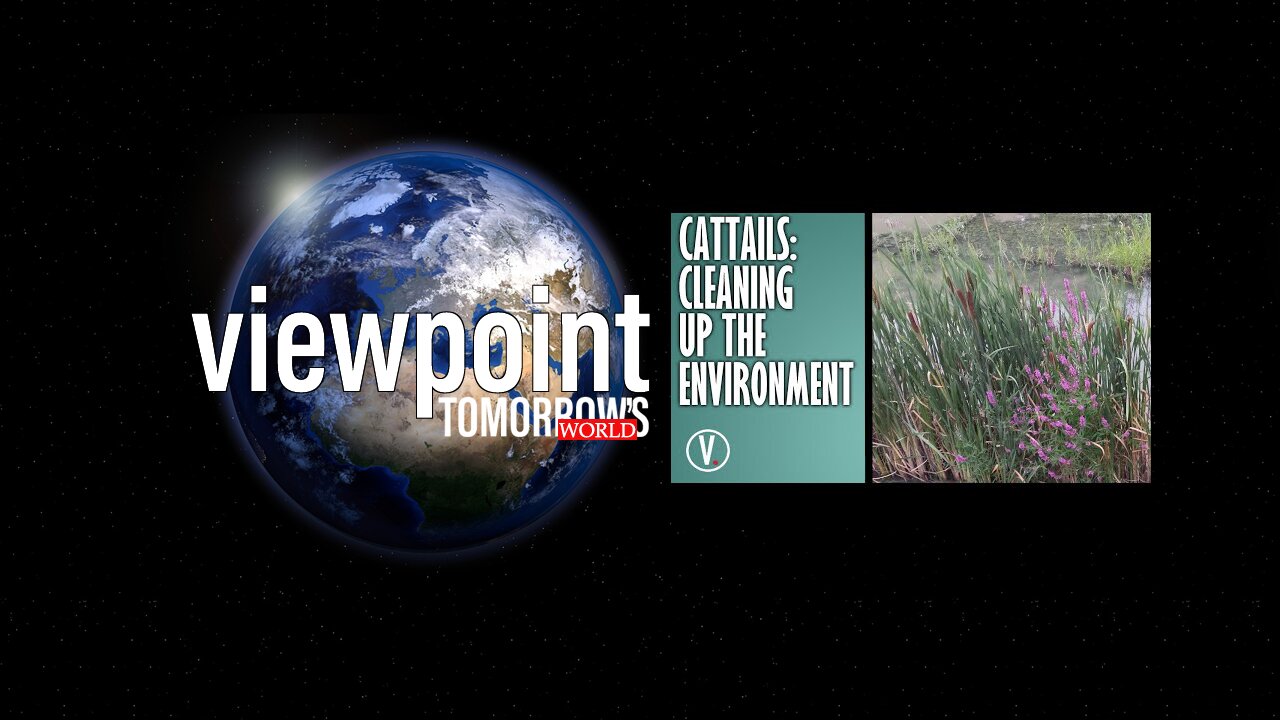Premium Only Content

Cattails: Cleaning Up The Environment
All communities are faced with the constant challenge of safely disposing of sewage. Sewage treatment that will render effluent harmless to the environment is actually very expensive. In many places, the cost is such that effluent is simply dumped in rivers, lakes or seas. One only needs to think back to the Rio Olympics in Brazil to illustrate the devastating effect of such practices.
The town of Humboldt, Saskatchewan needed a new treatment plant that it could not afford. A researcher, Dr. G. Lakshman, was given permission to develop two very small and very shallow lagoons outside of the community. In its carefully designed 8-inch deep trenches, workers planted thousands of cattails or bulrushes. Lakshman believed that marsh plants in general, and cattails in particular, had insatiable appetites for sewage, and were perhaps the root of the solution for waste treatment in such areas. He reasoned such plants normally exist at the bottom of drainage basins and are at the receiving end of all the material that eventually gets washed into low areas by rain and gravity.
Additional Resources:
Tomorrow’s World Magazine—Humboldt’s Humble Swamp: https://www.tomorrowsworld.org/magazines/2015/may-june/humboldts-humble-swamp
-
 6:00
6:00
Tomorrow's World Viewpoint - Rumble
9 days agoMass Shootings Start Somewhere — Why Teen Mental Health Needs Urgent Attention!
202 -
 1:12:57
1:12:57
Dear America
15 hours agoTrump Greeted With Roars From UFC Crowd + Bill Maher & Shaq Join Team MAGA?!
32.2K8 -
 LIVE
LIVE
Wendy Bell Radio
6 hours agoDon't Let The Bastards Grind You Down
9,550 watching -
 1:27:44
1:27:44
Game On!
18 hours ago $5.50 earnedWe have a MASTERS CHAMPION!
35.1K2 -
 12:27
12:27
Tactical Considerations
16 hours ago $4.27 earnedTop 3 Striker Fired Pistols That DOMINATE The Range in 2025
42.2K3 -
 25:35
25:35
JasminLaine
16 hours agoLiberals CAUGHT Planting Evidence to Frame Poilievre—CBC Host Gets FACT-CHECKED Into Oblivion
30.4K45 -
 1:37:56
1:37:56
TheDozenPodcast
21 hours agoWhy Capital PUNISHMENT needs restoring: Ex Detective exposes Child Protection Unit
44K4 -
 2:02:22
2:02:22
BEK TV
2 days agoTrent Loos in the Morning 4/14/2025
29.5K2 -
 20:18
20:18
DeVory Darkins
17 hours ago $25.03 earnedTrump SMACKS DOWN media as Democrats cry for Pete Hegseth to be Fired
94.5K149 -
 3:11:18
3:11:18
Badlands Media
1 day agoThe Narrative Ep. 18: Leaders of the Golden Age
164K47